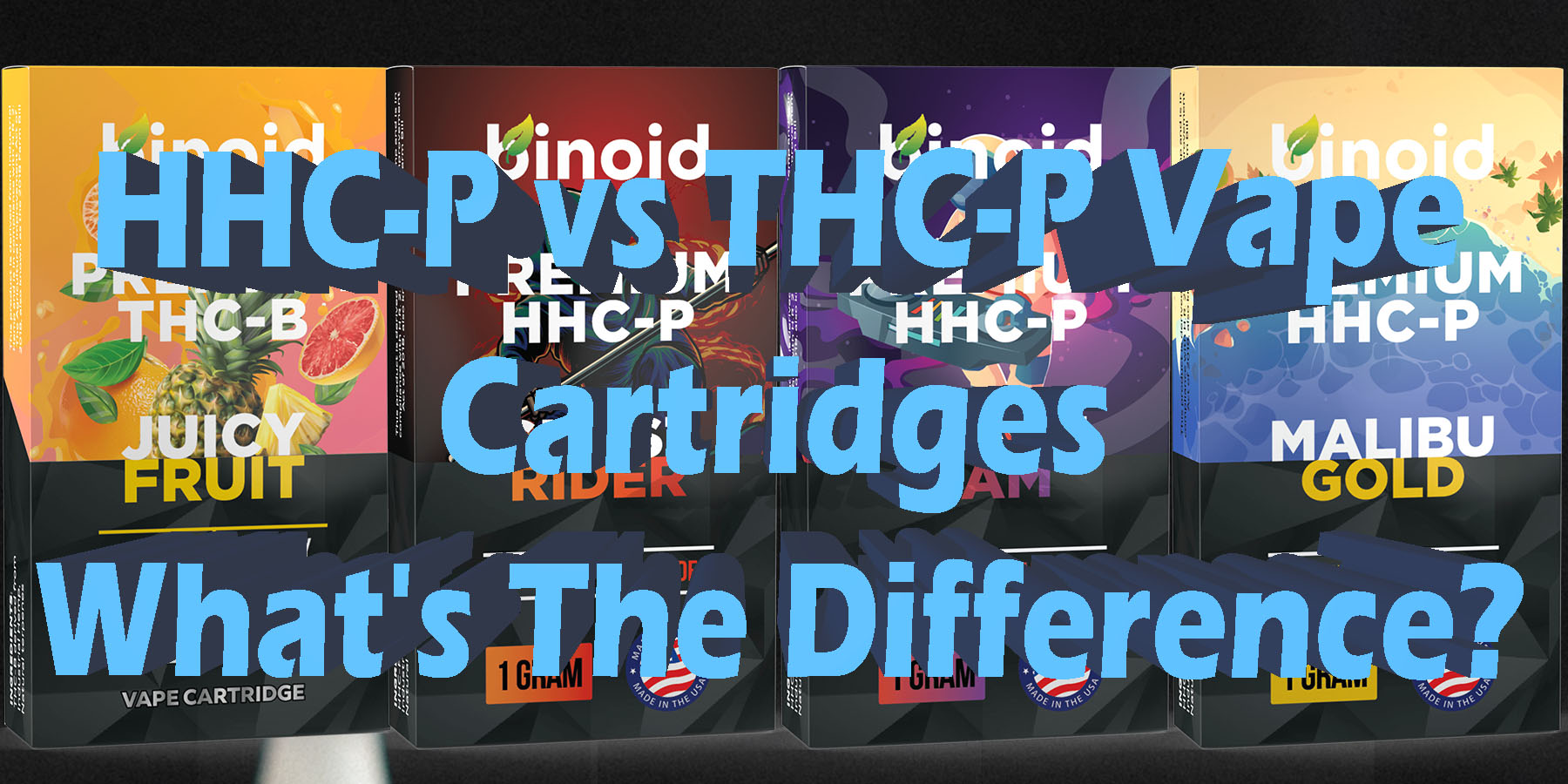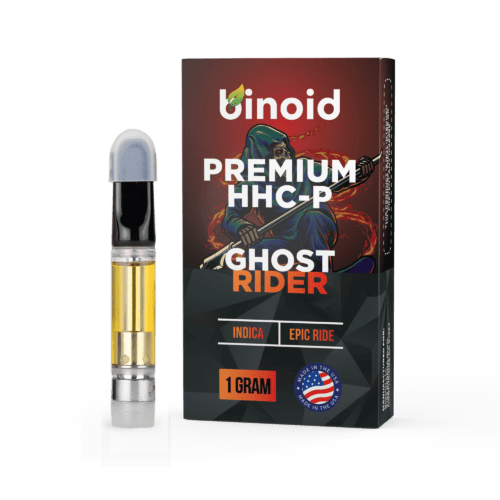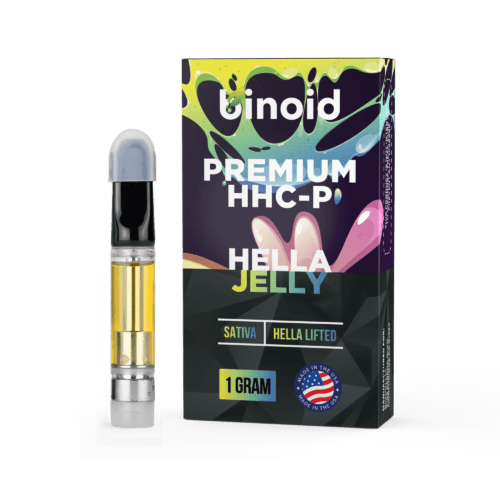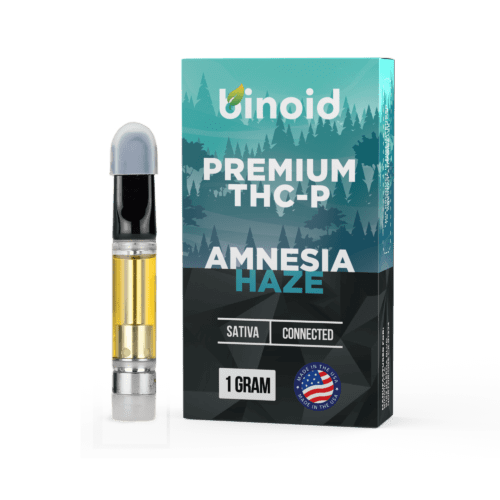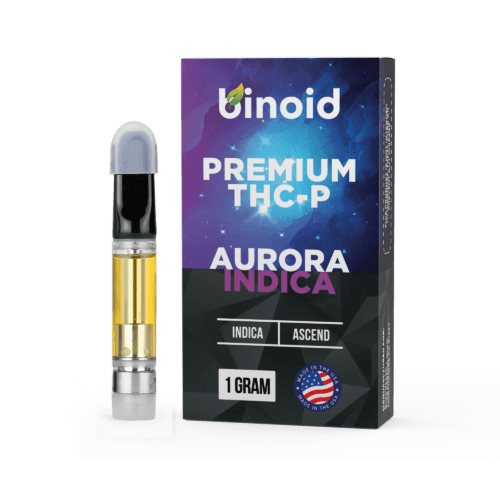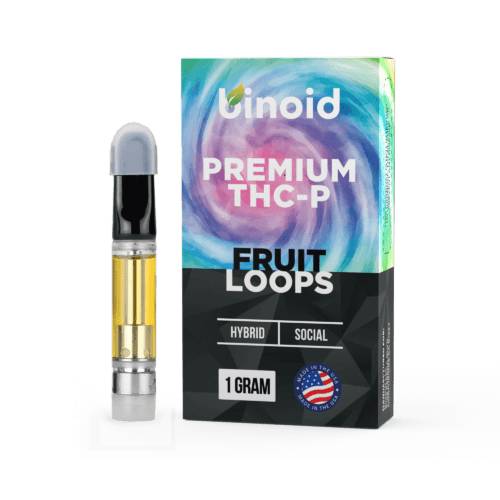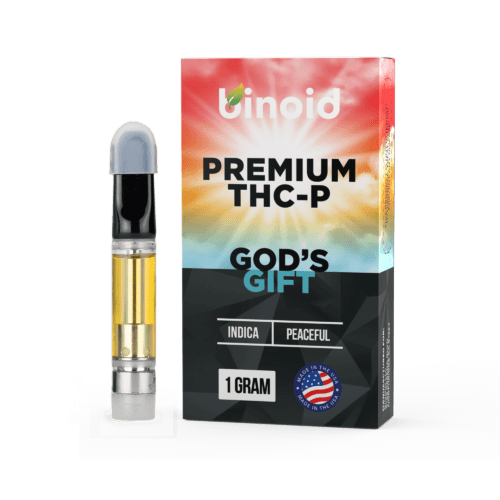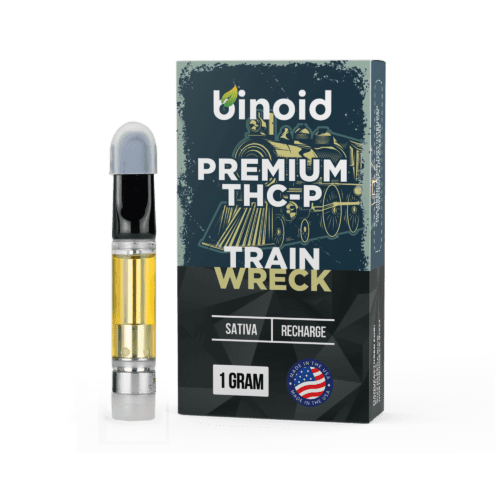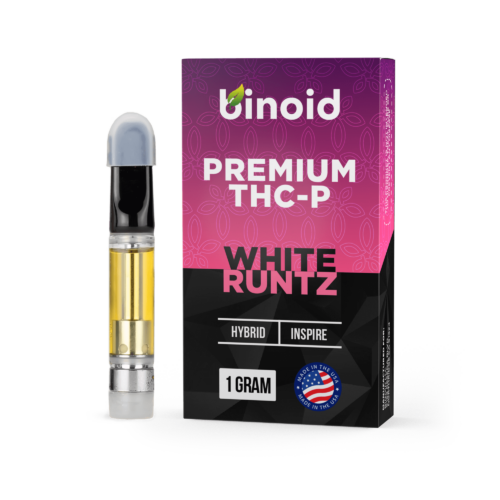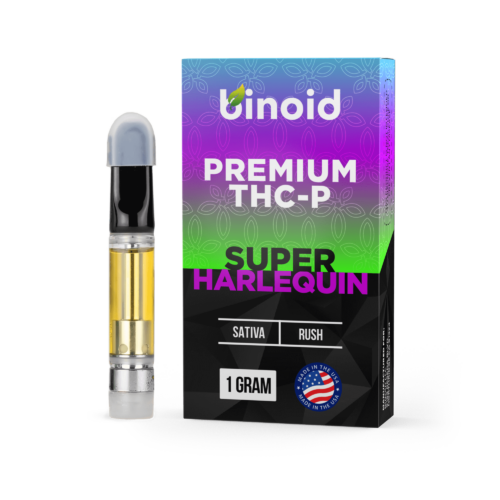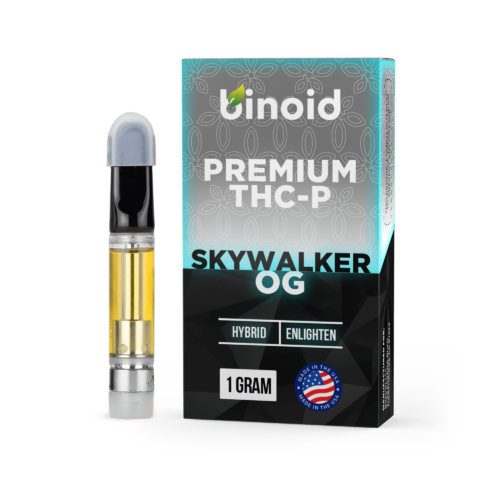In the rapidly evolving frontier of hemp-derived compounds, the conversation has dramatically shifted from simple curiosity to a nuanced pursuit of specific, high-impact experiences. The initial wave of novel cannabinoids has given way to a new echelon of molecules, compounds that challenge the very definition of potency and push the boundaries of what consumers thought possible. Within this advanced landscape, the vape cartridge remains the undisputed champion of delivery, offering a direct and efficient conduit to these powerful journeys.
It is here, at the apex of chemical innovation and consumer demand, that we find a true clash of titans. This is not a matchup for the uninitiated; it is a deep dive into the world of profound effects, a detailed comparison between two of the most formidable cannabinoids on the market: HHC-P vape cartridges vs. THC-P vape cartridges.
To Buy Cannabinoid Vape Cartridges Click Here
Recommended products
What are Cannabinoids?
To properly navigate the high-stakes comparison between HHC-P and THC-P, one must first possess a foundational knowledge of the chemical family to which they belong: cannabinoids. Broadly defined, cannabinoids are a class of chemical compounds distinguished by their unique ability to influence the body’s endocannabinoid system. These molecules are the principal architects of the effects associated with the cannabis plant, though the origins of these molecules are not confined to botanical sources.
The scientific community has organized them into three primary classifications: phytocannabinoids, which are naturally produced by plants (with Cannabis sativa being the most famous producer); endocannabinoids, which are synthesized within the bodies of humans and other animals to regulate internal functions; and synthetic cannabinoids, which are created exclusively in a laboratory setting. Compounds like the naturally-occurring THC-P and the semi-synthetic HHC-P have molecular structures that allow them to interface with our internal biological systems, initiating a complex series of physiological events that can profoundly influence everything from mood and perception to our general state of being.
The biological gateway through which these compounds exert their influence is the endocannabinoid system (ECS), a magnificent and intricate cell-signaling network that serves as a master regulator for maintaining the body’s internal equilibrium, a state known as homeostasis. This system is comprised of three core components: the endocannabinoids (like anandamide and 2-AG), which function as the body’s own signaling molecules; the cannabinoid receptors (primarily CB1 receptors in the brain and nervous system, and CB2 receptors in the immune and peripheral systems) that these molecules bind to; and the metabolic enzymes that synthesize and degrade endocannabinoids as needed.
Phytocannabinoids and their derivatives are effective because they can mimic the shape and function of our natural endocannabinoids, allowing them to bind to and stimulate these same receptors. The unique character and intensity of any given cannabinoid’s effects are determined by the precise nature of this bond—its strength (or binding affinity), the specific receptor it targets, and the shape of the molecule itself.
Within the vast botanical library of over one hundred identified phytocannabinoids, a practical distinction is made between “major” and “minor” compounds. Major cannabinoids, such as CBD and the renowned Delta 9 THC, are the most abundant and have consequently been the subject of the most extensive scientific research. Their natural prevalence makes direct extraction from plant material a relatively straightforward and commercially scalable endeavor.
Conversely, minor cannabinoids exist in the plant in only trace amounts, often making up less than 1% of its total cannabinoid profile. THC-P, the potent compound we are examining today, falls into this latter category. The extreme scarcity of these minor cannabinoids makes direct extraction for mass production impossible. Instead, they are typically created in a lab through chemical processes that convert a more abundant cannabinoid, like CBD, into the desired rare molecule, thereby making its unique properties accessible to a wider audience.
This entire framework of cannabinoid availability is fundamentally shaped by a single piece of legislation: the 2018 Farm Bill. This landmark federal law legalized industrial hemp and all products derived from it, with the critical stipulation that they contain no more than 0.3% Delta 9 THC by dry weight. While this law was specifically designed to limit Delta 9 THC, it inadvertently created a massive, federally legal market for all other cannabinoids that could be extracted or derived from compliant hemp.
This legal pathway, combined with breathtaking advancements in chemical synthesis, isolation, and purification techniques, has catalyzed the emergence of a market filled with an incredible diversity of cannabinoids. As a direct result, consumers now have access to a vast palette of experiences, empowering them to select specific molecules, like the powerful HHC-P and THC-P, to achieve highly targeted and specific outcomes.
Recommended products
What are Cannabinoid-Infused Vape Cartridges and How are They Typically Created?
Cannabinoid-infused vape cartridges, often simply called “vape carts,” are small, pre-filled containers that hold a liquid formulation of purified cannabinoid distillate and, typically, aromatic terpenes. These self-contained units are meticulously engineered to attach to a compatible battery, commonly known as a vape pen or 510-thread battery, which provides the necessary electrical power to heat the liquid and instantaneously transform it into an inhalable vapor. The primary function of a vape cartridge is to offer a convenient, discreet, and highly efficient method for consuming cannabinoids.
Unlike other consumption methods that require more preparation or have a significantly delayed onset, such as edibles, vaping allows for the rapid delivery of the active compounds directly into the bloodstream through the vast surface area of the lungs. This results in effects that can be felt almost immediately, often within a matter of minutes, providing users with unparalleled control over their experience as they can take small draws and precisely gauge the effects before deciding to continue.
The marketplace for cannabinoid vape cartridges is incredibly diverse, with products available in a multitude of shapes, sizes, and materials designed to suit various consumer preferences and accommodate ongoing technological advancements. The most ubiquitous size is the 1-gram (or 1mL) cartridge, which offers a substantial amount of oil that serves as a happy medium for both regular and occasional users. However, smaller half-gram options remain popular for those wishing to sample a new strain, while larger 2-gram, 3-gram, and even 5-gram disposable vape pens have emerged for users seeking maximum convenience and longevity.
In terms of shape, the classic cylindrical design with a 510-thread connection remains the undisputed industry standard due to its near-universal compatibility with the vast majority of batteries. Yet, some brands have pioneered proprietary pod-style systems that often feature a sleeker, more modern aesthetic and a magnetic connection, although they require a specific, brand-locked device to function. The materials used in cartridge construction are also a key differentiator, profoundly impacting performance, safety, and the purity of the user experience, with a clear hierarchy from basic plastics to premium glass and ceramic constructions.
While external designs may vary, the core components of a standard vape cartridge are universal and work in precise concert to deliver a smooth, flavorful, and consistent experience. Each part plays a critical, non-negotiable role in the device’s function, from the point of contact with the user to the electrical connection with the power source. A detailed breakdown reveals the intricate design that ensures safety and proper function:
Mouthpiece: This is the uppermost part of the cartridge through which the user inhales the vapor. Mouthpieces are crafted from a variety of materials, including common options like plastic, more premium choices like heat-resistant ceramic, and stylish alternatives like metal or wood. The shape can also differ—flat, rounded, or ergonomically contoured (“duckbill”)—to enhance comfort. The material choice is not merely aesthetic; ceramic mouthpieces, for instance, are excellent at dissipating heat, ensuring a cooler and more comfortable draw.
Tank/Reservoir (Chamber): The tank is the main body of the cartridge that holds the precious cannabinoid-infused oil. It must be transparent to allow the user to monitor the remaining liquid. While some budget cartridges may use polycarbonate plastic, high-quality tanks are almost exclusively made from borosilicate glass. This type of glass is highly durable and, most importantly, non-reactive, ensuring that there is no chemical leaching into the oil, which could alter the flavor and compromise the purity of the terpenes and cannabinoids.
Atomizer/Heating Element: The atomizer is the functional heart of the cartridge, responsible for heating the oil to its precise vaporization point (typically between 300-400°F). It consists of a heating coil wrapped around or embedded within a wicking material that draws in the oil. In modern, high-end cartridges, the atomizer core is made of a porous ceramic. This technology, often referred to by brand names like CCELL, provides exceptionally even heat distribution and a larger surface area, which prevents direct contact between the hot coil and the oil. This indirect heating is crucial for preventing burning, which would create a harsh taste and potentially harmful byproducts, and for preserving the delicate and complex flavor profile of the terpenes.
Base/Connector: The base is the bottom part of the cartridge that houses the atomizer and features the threading used to connect the device to a battery. The most common type is the 510-thread (referring to the 10 threads at 0.5 mm per thread), which has become the universal standard, ensuring interoperability between most cartridges and batteries on the market. The base also contains the airflow intakes—small holes that allow air to enter and mix with the vapor—and the electrical connection point that draws power from the battery to activate the heating element when the user inhales or presses a button.
The production of a cannabinoid-infused vape cartridge is a meticulous, multi-stage process that merges precision manufacturing with sophisticated chemical science to ensure a safe, effective, and enjoyable final product. This complex journey can be broken down into three distinct parts: the fabrication of the physical hardware, the formulation of the specialized oil, and the final assembly and rigorous quality control.
Part 1: How the Cartridge Itself is Made and Constructed
The manufacturing of the empty cartridge begins with the high-precision fabrication of its individual components in specialized facilities. The borosilicate glass for the tank is molded and cut to exact specifications. The ceramic for the atomizer core is created from refined mineral powders, which are then fired at extremely high temperatures and shaped, after which the metallic heating coil is carefully integrated. The mouthpiece and base are also manufactured, often through injection molding for plastics or CNC (Computer Numerical Control) machining for metals. These separate parts are then assembled in a sterile, dust-free clean-room environment (often adhering to ISO standards) to prevent any contamination. Throughout this process, stringent quality control is paramount, with manufacturers conducting tests for air-tightness to prevent leaks, ensuring proper airflow resistance for a good draw, and verifying that the electrical connections are sound and the 510-threading is perfectly machined.
Part 2: How the Cannabinoid-Infused Vape Oil is Made
This highly scientific stage starts with legally compliant, high-quality hemp biomass. The cannabinoids are first extracted from the plant material using various methods. For stable distillates, supercritical CO2 or ethanol extraction is common. For more volatile, full-spectrum extracts rich in acidic cannabinoids, cold extraction methods using solvents like butane or propane are often used to create “live resin.” After extraction, the oil is refined. For minor cannabinoids, this may involve complex isomerization to convert a precursor like CBD into the target molecule. For major cannabinoids, it may involve distillation to achieve high purity. Finally, this purified oil is formulated, often by reintroducing carefully selected terpene profiles to create the desired flavor, aroma, and strain-specific effects.
Part 3: Bringing It All Together
In the final stage, the precisely formulated cannabinoid and terpene mixture is gently heated to reduce its viscosity and is then carefully injected into the empty, assembled cartridges. This is typically done using automated filling machines in a sterile environment to ensure dosage consistency and prevent contamination. Once filled, the cartridges are securely capped or sealed to create an airtight container that prevents any leakage. The last and arguably most critical step is comprehensive third-party lab testing. A statistically significant sample from each batch is sent to an independent, ISO-accredited laboratory. There, it is tested for potency (to confirm cannabinoid percentages), purity (to ensure it is free from residual solvents, heavy metals, pesticides, and microbial contaminants), and legal compliance (to verify the Delta 9 THC level is at or below the 0.3% threshold). Only after passing these rigorous tests is the batch approved for packaging and release to the market.
Recommended products
Breaking Down Today’s Cannabinoid Vape Cartridges Matchup: HHC-P Vape Cartridges vs. THC-P Vape Cartridges
With a robust and expert-level understanding of cannabinoids and the intricate world of vape cartridge production now firmly established, we can direct our complete attention to the main event. This is a confrontation between two of the most powerful and talked-about compounds in the modern hemp industry. This matchup is not about determining an absolute winner, but rather about meticulously dissecting and illuminating the unique molecular characteristics, profoundly different effects, and specific use cases that define each of these cannabinoid heavyweights.
HHC-P and THC-P both offer experiences that are far beyond the ordinary, representing the pinnacle of potency available today. Understanding their distinct natures is the crucial key to making an informed and responsible choice that aligns with your personal tolerance, preferences, and desired outcome.
Contender #1: HHC-P Vape Cartridges
Emerging from the most advanced frontiers of cannabinoid science, HHC-P vape cartridges have established themselves as one of the undisputed champions of potency. These products are not for the faint of heart; they are specifically designed for the most experienced and high-tolerance users who are seeking an experience that pushes well beyond the boundaries of traditional cannabinoids. HHC-P is spoken of in reverent tones within enthusiast communities, celebrated for its profoundly intense and exceptionally long-lasting effects that can be felt for many hours, sometimes even into the next day. It is renowned for delivering a powerful, all-encompassing euphoria that combines a formidable cerebral journey with a deep, weighted body sensation. This has cemented HHC-P’s status as the ultimate choice for those looking to explore the absolute apex of cannabinoid intensity.
HHC-P, or Hexahydrocannabiphorol, is a semi-synthetic, hydrogenated cannabinoid. To understand its power, one must first look at its sibling, THC-P. THC-P gains its incredible strength from an elongated seven-carbon alkyl side chain, which allows it to bind to the CB1 receptor with an affinity many times greater than Delta 9 THC. HHC-P is the hydrogenated form of THC-P. In the laboratory, scientists take THC-P and, through a process called hydrogenation, add hydrogen atoms to the molecule.
This process removes the double bonds in its chemical structure, creating a new, more stable compound: HHC-P. It retains the same seven-carbon side chain that gives THC-P its immense power, but now in a more stable molecular form. This combination results in a cannabinoid that possesses the supreme potency of THC-P, but with the characteristic stability and potentially unique experiential quality of the HHC family of compounds.
Now, the market for HHC-P vape cartridges is unique in that it almost exclusively consists of blends rather than pure, unadulterated products. Due to its overwhelming potency, HHC-P is typically used as a powerful additive, incorporated in small percentages (often 1-5%) into a base of a milder cannabinoid like Delta 8 THC to dramatically increase the overall intensity of the experience. This approach allows for a more controlled and marketable product, offering consumers a way to experience HHC-P’s power without being completely overwhelmed. These expertly crafted blends are available in a wide variety of formats designed to showcase their amplified effects:
Shapes & Sizes: HHC-P blend cartridges are readily available in all the industry-standard formats. The 1-gram and 2-gram 510-threaded cartridges are the most common, providing broad compatibility with a wide range of batteries. All-in-one disposable vapes containing HHC-P blends are also extremely popular, offering maximum convenience and often coming in larger 3-gram or even 5-gram capacities for extended use.
How They’re Constructed: Given the premium nature of HHC-P products, brands universally use high-quality hardware to ensure a safe and effective experience. This means you will almost always find these blends housed in cartridges made with inert borosilicate glass tanks and advanced ceramic core atomizers. This superior construction is essential for vaporizing the thick cannabinoid oil at a consistent and optimal temperature, preventing burning and ensuring a smooth, clean draw that preserves the full flavor of the terpene profile.
Potential Use of Live Resin or Live Rosin: To create the ultimate top-shelf experience, many brands infuse their HHC-P blends with live resin or live rosin. This adds a full spectrum of naturally derived terpenes and minor cannabinoids to the mix. The inclusion of these rich, aromatic extracts not only provides a profoundly authentic and robust flavor but also contributes to a more nuanced and well-rounded experience through the entourage effect, where the various compounds work together to modulate and enhance the overall effects of the potent HHC-P.
Strain-Infused: The perceived effects of an HHC-P blend are heavily guided by its specific terpene profile, which is formulated to mimic well-known cannabis strains. Sativa-dominant blends are designed to amplify the energetic, cerebral, and creative aspects of the HHC-P experience. Indica-dominant blends will lean into the powerful body sensations, promoting deep relaxation and tranquility. Hybrid strains aim to provide a balanced experience, combining the potent mental euphoria with a comforting physical buzz.
Sometimes Combined with Other Cannabinoids: As HHC-P is almost always part of a blend, understanding its combinations is key. It serves as the “rocket fuel” in these formulations, with its character being shaped by the base cannabinoids it’s mixed with:
Moderate Potency: HHC-P is rarely, if ever, used to create a truly “mild” product. Its inclusion typically elevates a blend to at least moderate potency. It is sometimes blended with Delta 8, Delta 9, or THCA to create a powerful but more familiar-feeling experience, where the HHC-P acts as a significant booster.
Strong Potency: To create the most powerful products on the legal market, formulators will create complex blends featuring multiple potent cannabinoids. A common ultra-potent blend might include a base of HHC or HHC-O, combined with other powerful molecules like THC-P, THC-H, or THC-JD, with a small but impactful percentage of HHC-P added to maximize the peak intensity and ensure an exceptionally long duration.
The overall effects of an HHC-P vape cartridge are defined by one primary characteristic: supreme potency. Its functional aspects are geared exclusively toward highly experienced, high-tolerance users, as its effects can be intensely psychoactive, profoundly long-lasting, and reality-altering. The experience often has a slow, creeping onset, gradually building over 30-90 minutes to a formidable peak that can last for many hours.
This baseline intensity is then heavily shaped by the blend it is part of. In a Sativa blend, it can feel like a soaring, expansive, and powerfully euphoric cerebral journey. In an Indica blend, the HHC-P can amplify the body high to an incredible degree, leading to an overwhelmingly deep and heavy state of physical bliss that can be immobilizing. The inclusion of live resin adds a crucial layer of authentic flavor and nuance, helping to ground the intense experience with a familiar and enjoyable strain profile.
Recommended products
Pros & Cons
Like any product, especially those known for high potency, HHC-P vape cartridges come with their own distinct set of advantages and potential drawbacks. A thorough understanding of these can help you determine if they are the right fit for your personal needs, tolerance, and expectations.
Pros:
Supreme Potency: The single greatest advantage of HHC-P is its extraordinary potency, which is widely considered to be among the strongest of any cannabinoid available. Thanks to its seven-carbon side chain and hydrogenated structure, it provides an incredibly powerful experience. For users with the highest tolerances who find that even compounds like THC-P are becoming less effective, HHC-P offers a new and formidable peak to explore.
Exceptionally Long Duration: The effects of HHC-P are famous for their remarkable duration. Users frequently report that the experience can last for 12 hours or more, with residual effects sometimes lingering for over 24 hours. This makes it the cannabinoid of choice for those seeking a truly extended and sustained journey, offering incredible value from a single dose for a full day of leisure.
Enhanced Stability: The hydrogenation process that converts THC-P to HHC-P removes double bonds from the molecule’s structure. This makes HHC-P an inherently more stable compound, less susceptible to degradation from oxidation, heat, and UV light. This enhanced stability can lead to a longer shelf life, ensuring the product maintains its formidable potency for a greater period.
Small Amount Needed: Because HHC-P is so incredibly powerful, only a minuscule amount is needed to produce profound effects. In blends, it is often used at concentrations of 5% or less. This means that a vape cartridge containing an HHC-P blend can be extremely efficient, as a single, very small puff is often more than enough, allowing the product to last a very long time.
The Ultimate Amplifier: HHC-P serves as the ultimate amplifier in cannabinoid blends. It can take any formulation and elevate its potency and duration to the absolute maximum. A small percentage of HHC-P can transform a standard high into a multi-hour odyssey, making it an invaluable tool for formulators creating top-tier, high-potency products.
Unrivaled for High-Tolerance Users: For a small segment of the population with exceptionally high or stubborn tolerances, HHC-P is a game-changer. It provides a viable and effective option when virtually all other cannabinoids have ceased to produce the desired level of effects. Its unique and powerful interaction with cannabinoid receptors offers a way to have a profound experience once again.
Novel HHC-Family Experience: While it shares the potency of THC-P, HHC-P is part of the HHC family. Anecdotally, users often describe the effects of HHC compounds as having a warmer, more relaxing, and less anxious quality than their THC counterparts. HHC-P may offer the best of both worlds: the supreme potency of a “-phorol” cannabinoid with the smoother character of a hydrogenated one.
Well-Rounded Body & Mind Effect: Many users report that HHC-P provides a powerful experience that is well-balanced between cerebral and physical effects. The mental journey is intense and profound, while the body sensation is often described as a heavy, weighted, and deeply relaxing blanket of bliss. This comprehensive effect can be incredibly immersive and satisfying for those seeking a total experience.
Cons:
Extremely Overwhelming for Most Users: The immense potency of HHC-P cannot be overstated. It is completely unsuitable for beginners, intermediate users, and even many experienced consumers. The experience can be intensely psychoactive and psychologically overwhelming, potentially leading to significant discomfort, confusion, or paranoia. It must be approached with extreme caution.
Lack of Scientific Research: HHC-P is a very new and obscure semi-synthetic cannabinoid. There is virtually no formal scientific or clinical research on its effects, safety profile, or long-term impacts in humans. Users must rely entirely on anecdotal reports, which presents a massive unknown for anyone concerned with safety and well-documented product profiles.
Potential for Extended Impairment: The exceptionally long duration of HHC-P is a significant drawback. A user may feel substantially impaired for an entire day or even longer. This can seriously interfere with work, driving, social obligations, and general functioning. HHC-P should only be used when one has a completely clear schedule for at least 24-48 hours.
Complex Legal Gray Area: As a hydrogenated analogue of THC-P, HHC-P exists in a complex and precarious legal gray area. Its semi-synthetic nature and its relation to THC could make it a target for regulation under the Federal Analogue Act. Furthermore, many states have banned all HHC variants and other potent synthetic cannabinoids, making it explicitly illegal in numerous jurisdictions.
Recommended products
Contender #2: THC-P Vape Cartridges
Entering the arena as the reigning champion of natural cannabinoid potency is THC-P. THC-P vape cartridges have created a massive stir in the cannabinoid community, quickly earning a legendary reputation for their profoundly powerful effects, which are reported to dwarf even those of traditional Delta 9 THC. These products are not intended for casual use; they represent the absolute summit of psychoactive intensity derived from the cannabis plant.
THC-P is sought after by the most experienced connoisseurs and high-tolerance users who are looking for an experience that transcends the ordinary, often described as intensely euphoric, long-lasting, and at times, almost psychedelic in nature. It stands as a testament to the hidden depths of the cannabis plant’s chemistry, a rare molecule that has redefined the upper limits of potency.
THC-P, or Tetrahydrocannabiphorol, is a naturally occurring phytocannabinoid that was only recently discovered by a team of Italian researchers in late 2019. While it exists naturally in cannabis, it is found in extremely low concentrations, making its direct extraction unfeasible for commercial production. The key to THC-P’s extraordinary power lies in its unique molecular structure. All THC cannabinoids have an alkyl side chain, which plays a crucial role in how strongly they bind to the body’s CB1 receptors. Delta 9 THC has a five-carbon atom chain. THC-P, however, features an elongated seven-carbon atom alkyl side chain.
This seemingly small difference of two extra carbons dramatically increases its ability to bind to the CB1 receptor. The 2019 discovery team found that THC-P has a binding affinity for the CB1 receptor that is approximately 33 times stronger than that of Delta 9 THC. This incredible binding affinity is the scientific explanation for its formidable and unparalleled psychoactive effects. Due to its natural scarcity, the THC-P sold in vape cartridges is typically produced in a lab by chemically altering a more abundant cannabinoid like CBD to create the desired seven-carbon side chain structure.
Now, the market for THC-P vape cartridges is unique in that it almost exclusively consists of blends rather than pure, unadulterated products. Due to its overwhelming potency, THC-P is typically used as a powerful additive, incorporated in small percentages (often 1-10%) into a base of a milder cannabinoid like Delta 8 THC to dramatically increase the overall intensity of the experience. This approach allows for a more controlled and marketable product, offering consumers a way to experience THC-P’s power without being completely overwhelmed. These expertly crafted blends are available in a wide variety of formats designed to showcase their amplified effects:
Shapes & Sizes: THC-P blend cartridges are readily available in all the industry-standard formats. The 1-gram and 2-gram 510-threaded cartridges are the most common, providing broad compatibility with a wide range of batteries. All-in-one disposable vapes containing THC-P blends are also extremely popular, offering maximum convenience and often coming in larger 3-gram or even 5-gram capacities for extended use.
How They’re Constructed: Given the premium nature of THC-P products, brands universally use high-quality hardware to ensure a safe and effective experience. This means you will almost always find these blends housed in cartridges made with inert borosilicate glass tanks and advanced ceramic core atomizers. This superior construction is essential for vaporizing the thick cannabinoid oil at a consistent and optimal temperature, preventing burning and ensuring a smooth, clean draw that preserves the full flavor of the terpene profile.
Potential Use of Live Resin or Live Rosin: To create the ultimate top-shelf experience, many brands infuse their THC-P blends with live resin or live rosin. This adds a full spectrum of naturally derived terpenes and minor cannabinoids to the mix. The inclusion of these rich, aromatic extracts not only provides a profoundly authentic and robust flavor but also contributes to a more nuanced and well-rounded experience through the entourage effect, where the various compounds work together to modulate and enhance the overall effects of the potent THC-P.
Strain-Infused: The perceived effects of a THC-P blend are heavily guided by its specific terpene profile, which is formulated to mimic well-known cannabis strains. Sativa-dominant blends are designed to amplify the energetic, cerebral, and creative aspects of the THC-P experience. Indica-dominant blends will lean into the powerful body sensations, promoting deep relaxation and tranquility. Hybrid strains aim to provide a balanced experience, combining the potent mental euphoria with a comforting physical buzz.
Sometimes Combined with Other Cannabinoids: As THC-P is almost always part of a blend, understanding its combinations is key. It serves as the “rocket fuel” in these formulations, with its character being shaped by the base cannabinoids it’s mixed with:
Non-Intoxicating: It is extremely rare to see THC-P blended with non-intoxicating cannabinoids, as its entire purpose is to maximize potency. However, a small amount of CBD might theoretically be added to a blend to help temper the intense psychoactivity for a slightly more grounded feel.
Mild Potency: THC-P is not used in mild potency blends. Its inclusion, even in tiny amounts, immediately elevates a product into the moderate to strong potency category.
Moderate Potency: This is the most common category for THC-P products. It is frequently blended with Delta 8 THC. In this combination, the Delta 8 provides a familiar, calming base, while the THC-P adds a significant layer of intensity, duration, and euphoria, transforming the gentle Delta 8 experience into something far more powerful.
Strong Potency: To create the most powerful products on the legal market, formulators will create complex blends featuring multiple potent cannabinoids. A common ultra-potent blend might include a base of Delta 8, a significant amount of HHC, a percentage of HHC-O for its unique euphoria, and a small but impactful percentage of THC-P to maximize the peak intensity and duration. Other cannabinoids like THC-JD, HHC-P, and PHC are also used in these “super-blends”.
The overall effects of a THC-P vape cartridge are defined by one primary characteristic: overwhelming potency. Its functional aspects are geared exclusively toward highly experienced, high-tolerance users, as its effects can be intensely psychoactive, long-lasting, and profoundly reality-altering. The experience often has a slow, creeping onset, gradually building over 30-60 minutes to a peak that is significantly more powerful and enduring than traditional Delta 9 THC.
This baseline intensity is then heavily shaped by the blend it is part of. In a Sativa blend with Delta 8, it can feel like a soaring, energetic, and almost psychedelic cerebral journey. In an Indica blend, the THC-P amplifies the body high to a profound degree, leading to an incredibly deep and heavy state of physical bliss. The inclusion of live resin adds a crucial layer of authentic flavor and nuance, helping to ground the intense experience with a familiar and enjoyable strain profile.
Recommended products
Pros & Cons
THC-P vape cartridges offer a unique and extreme set of benefits and important considerations that place them in a category all their own. Weighing these pros and cons is absolutely essential in deciding if its supremely potent profile is a suitable choice for you.
Pros:
Unmatched Potency: The single greatest advantage of THC-P is its extraordinary potency, which is believed to be many times stronger than that of Delta 9 THC. This is a direct result of its seven-carbon alkyl side chain, which allows it to bind with incredible affinity to the body’s CB1 receptors. For users with extremely high tolerances who find that other cannabinoids no longer provide the desired effects, THC-P offers a powerful and effective solution.
Extremely Long Duration: The effects of THC-P are renowned for their exceptionally long duration, often lasting for many hours and, for some users, even into the next day. This prolonged experience can be seen as a significant benefit, providing a sustained state of euphoria and relaxation that is ideal for a full day off or a long, leisurely evening. This longevity offers great value compared to shorter-acting cannabinoids.
Small Amount Needed (Cost-Effective): Because THC-P is so incredibly potent, only a very small amount is needed to produce strong effects. It is typically used in blends at concentrations of 10% or less. This means that a single vape cartridge containing a THC-P blend can be very cost-effective, as a single puff is often more than enough for even experienced users, allowing the cartridge to last for a very long time.
Enhances Other Cannabinoids: THC-P acts as a powerful amplifier when included in cannabinoid blends. It can take a standard Delta 8 or HHC product and elevate its effects to an entirely new level, increasing the peak intensity and extending the duration of the entire experience. This makes it a highly valuable tool for formulators looking to create a diverse range of products with varying levels of intensity.
Novel and Unique Experience: For the seasoned cannabinoid explorer who thinks they have tried it all, THC-P offers a genuinely new and unique psychoactive experience. Its effects are often described in different terms than traditional THC, with many users reporting a more clear-headed yet intensely powerful and sometimes surreal or psychedelic-like quality. It provides an opportunity to explore a new dimension of the cannabis plant’s potential.
Natural Origin (Phytocannabinoid): Despite its rarity and the need for laboratory conversion for commercial production, THC-P is a naturally occurring phytocannabinoid that was discovered in the cannabis plant. For consumers who prefer to use compounds that are part of the plant’s natural chemical makeup, as opposed to semi-synthetic derivatives like HHC-O, this offers a significant point of appeal. It represents the pinnacle of nature’s own cannabinoid engineering.
The Ultimate Solution for High-Tolerance Users: Over time, regular use of cannabinoids can lead to a significant increase in tolerance, making it difficult to achieve the desired effects. THC-P, with its incredibly strong binding affinity, effectively “resets” this dynamic. It provides a viable and powerful option for individuals with the highest tolerance levels, allowing them to have a profound and satisfying experience once again.
Widely Available in Expertly Crafted Blends: Because THC-P is almost always sold in blends, consumers benefit from the work of expert formulators. These blends are often carefully designed to balance the intense effects of THC-P with the more familiar characteristics of cannabinoids like Delta 8 or HHC, and are paired with specific terpene profiles to create a targeted and more well-rounded experience. This offers a more curated and thoughtful product than simply consuming a single, overpowering isolate.
Cons:
Extremely Overwhelming for Most Users: The immense potency of THC-P makes it completely unsuitable for beginners and even many intermediate users. The experience can be intensely psychoactive and psychologically overwhelming, potentially leading to feelings of unease, confusion, or paranoia. It is a cannabinoid that absolutely must be approached with the utmost caution and respect.
Very Slow Onset (High Risk of Overconsumption): Similar to edibles, THC-P can have a very slow and delayed onset, sometimes taking an hour or more to reach its full effects. This creates a significant risk of overconsumption. An impatient user might take a second or third puff, thinking the first one was ineffective, only to be hit with the overwhelming and compounded effects of all three doses later on.
Lack of Long-Term Research: As a cannabinoid that was only discovered in 2019 and has only recently become widely available, there is virtually no long-term scientific research on the effects of THC-P in humans. While it is a natural compound, the full scope of its physiological and psychological impact, especially with regular use, is largely unknown. This lack of data represents a significant consideration for safety-conscious consumers.
Potential for Extended Impairment: The exceptionally long duration of THC-P‘s effects can be a significant drawback. A user may still feel noticeably impaired or “off” the morning after consumption, which can interfere with work, driving, or other responsibilities. This potential for a “next-day” hangover effect means that THC-P should only be used when one has a completely clear schedule for at least 24 hours.
Recommended products
Other Key Things You Should Know About When Choosing Either HHC-P Vape Cartridges or THC-P Vape Cartridges
Choosing between HHC-P and THC-P vape cartridges is a decision that should be made with the utmost care and a deep understanding of the products. This is not a simple choice between two different flavors; it is a selection between two of the most powerful and intense experiences available on the legal hemp market. A safe and positive outcome hinges on a holistic appreciation of the product, from its complex chemical origins to the quality of the hardware that delivers the vapor. The current hemp-derived cannabinoid market operates with minimal federal oversight, placing the full burden of due diligence squarely on you, the consumer.
To navigate this high-potency landscape safely, it is essential to look past marketing hype and scrutinize the factors that truly define a product’s quality, safety, and suitability for your specific and experienced needs.
Source of Hemp: The absolute foundation of any high-quality cannabinoid product is the hemp from which it is derived. The quality of this starting botanical material directly and profoundly impacts the purity and safety of the final distillate. It is imperative to choose products made from hemp grown in the United States, as domestic farmers are subject to federal and state regulations regarding cultivation practices under the Farm Bill. Look for brands that are completely transparent about their sourcing, preferably using hemp grown with organic and sustainable methods.
Third-Party Lab Testing (COAs): This is, without exaggeration, the single most important factor in verifying the safety, potency, and legitimacy of a vape cartridge. A Certificate of Analysis (COA) is a document from an accredited, independent third-party laboratory that details the precise composition of the product. Never purchase a cannabinoid product from a brand that does not make these reports easily accessible for every batch. A comprehensive “full panel” test should include potency analysis, a purity panel for residual solvents, a heavy metals test, a comprehensive pesticide screening, and a test for microbial contaminants.
Extraction and Conversion Methods: For these advanced cannabinoids, the lab processes are critical. Both HHC-P and commercially available THC-P are the result of sophisticated chemical conversions. These processes must be performed with extreme precision by qualified chemists in a professional laboratory. Improper reactions can leave behind unwanted byproducts or residual catalysts. Trustworthy brands will utilize advanced purification techniques like flash chromatography to ensure you receive only the pure, target cannabinoids.
Terpene Profiles: Terpenes do far more than provide taste; they shape the effects via the entourage effect, which can be especially important for modulating the intense experiences of HHC-P and THC-P. The highest quality products will feature cannabis-derived terpenes (CDTs) or, even better, live resin infusions. These provide an authentic, nuanced flavor and a more well-rounded effect that can help to “steer” the powerful journey in a more pleasant direction.
Cartridge Hardware Quality: The oil is only half the equation; the hardware is equally critical. Low-quality cartridges can clog, leak, or use cheap coils that burn the oil, creating a harsh taste and potentially harmful byproducts. The best cartridges use inert materials like borosilicate glass tanks and advanced ceramic heating elements (e.g., CCELL technology). Furthermore, ensure the hardware itself has been tested for heavy metal leaching.
Your Personal Tolerance (Extreme Caution): This cannot be overstated. These cannabinoids are not for beginners. They are intended for individuals with a very high, established tolerance for psychoactive cannabinoids. If you are new to this world, you should not start here. Even for experienced users, the rule is “start with one tiny puff and wait.” The delayed onsets of both compounds require extreme patience. A single 2-3 second draw is a full dose for most. Wait at least one to two hours before even considering another.
Desired Experience: Clearly define your goal. Are you an experienced user looking for the absolute pinnacle of long-lasting, stable, and well-rounded (mind and body) euphoria? HHC-P might be the more appropriate choice. Are you a connoisseur with the highest tolerance looking to experience the raw, natural, and potentially more cerebral peak of cannabinoid intensity? A THC-P blend would be the tool for that specific, and very advanced, job.
The Importance of the Battery (Vape Pen): Your experience is significantly impacted by the battery you use. A simple, buttonless battery will work, but a more advanced battery with variable voltage settings and a pre-heat function offers far more control. Lower voltage settings (e.g., 2.5V-2.8V) are highly advisable with these compounds to provide a slightly less intense hit. A pre-heat function is invaluable for preventing clogs with these thick distillates.
Legal Landscape: The legal status of these compounds is extraordinarily complex. THC-P, as a natural phytocannabinoid, may have a slightly more stable legal footing than the semi-synthetic HHC-P, but both exist in a gray area. Critically, individual states can and do create their own regulations that are stricter than the federal Farm Bill, specifically banning these potent compounds. It is your sole responsibility as a consumer to research and be aware of the most current laws in your specific state and local jurisdiction before making a purchase.
Brand Reputation and Transparency: In a largely unregulated industry, a brand’s reputation is your best indicator of quality. Look for companies with a long-standing, positive presence and a commitment to transparency. A trustworthy brand will have a professional website with clear information about their sourcing, manufacturing processes, and, most importantly, easily accessible lab test results for every product batch.
Understanding Blends: With these cannabinoids, you are almost always buying a blend. Read the product description and lab report carefully to understand the exact cannabinoid ratios. A blend of 90% Delta 8 and 5% THC-P will be a vastly different experience than a blend of 50% HHC and 5% HHC-P. Understanding what each component contributes is crucial for predicting the experience.
Set and Setting: With cannabinoids of this magnitude, the concept of “set and setting” becomes crucial. “Set” refers to your mindset—be in a calm, positive, and prepared state of mind. “Setting” refers to your physical environment—be in a safe, comfortable, and familiar place where you can relax without responsibilities for a very long time. Do not use these products for the first time in a public or stressful environment. Treat them with the same respect and preparation one would for any profound psychoactive experience.
Recommended products
Choosing Your Summit
In the final reckoning, the choice between HHC-P and THC-P is less a competition and more a consultation of your personal map of experience. This is not about which is “better,” but which peak you are prepared to climb. THC-P represents the highest natural summit, a testament to the raw, unadulterated power that nature can engineer into a single molecule. HHC-P, by contrast, is a marvel of the alchemist’s art, a compound intentionally modified to enhance stability while retaining that summit’s profound intensity.
By arming yourself with this deep knowledge and an unwavering commitment to safety and responsibility, you are empowered to approach this apex of the cannabinoid world with wisdom. The existence of these compounds marks a new chapter, one where the user is no longer just a consumer, but a conscious explorer navigating the furthest reaches of a truly incredible chemical frontier.

